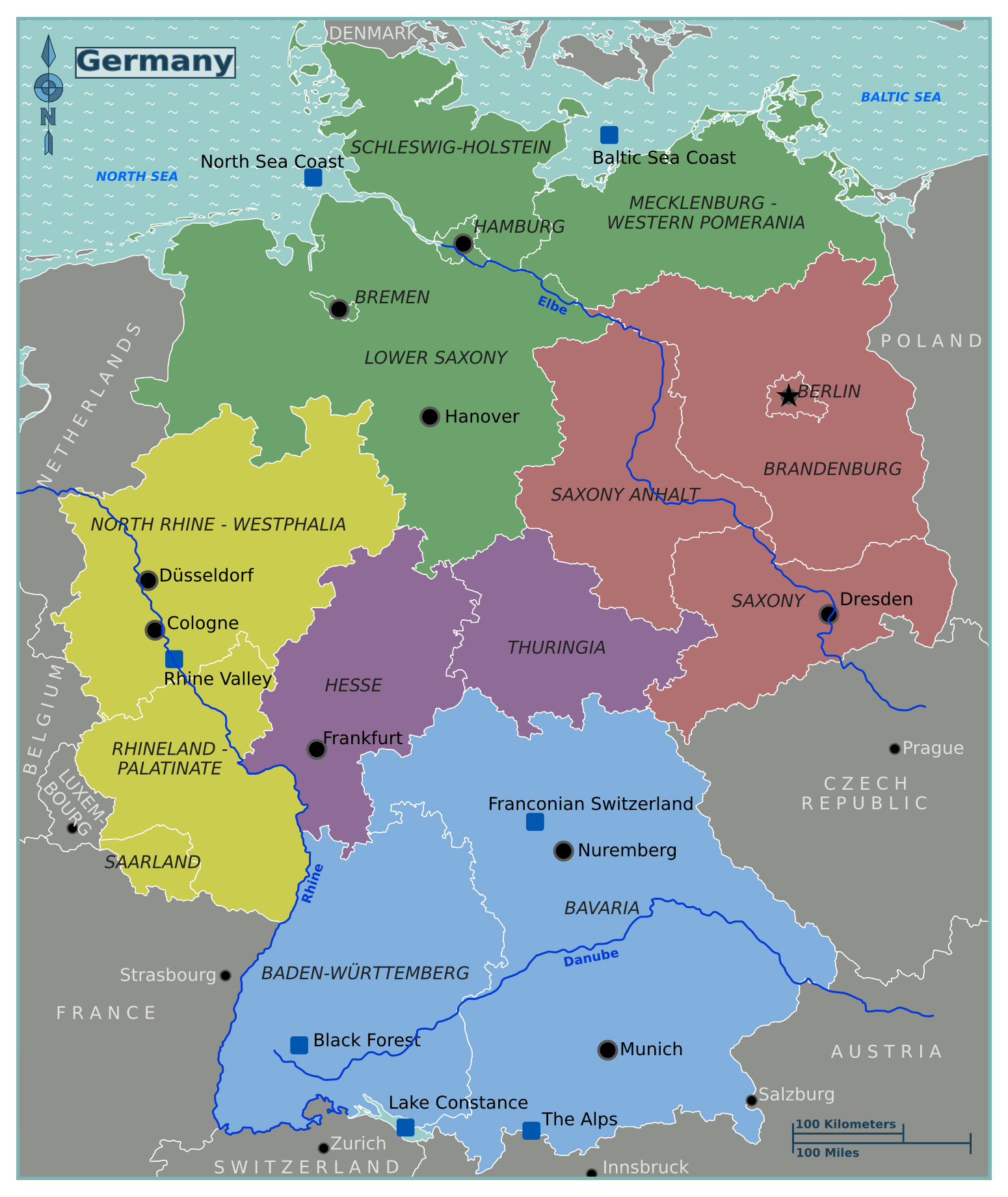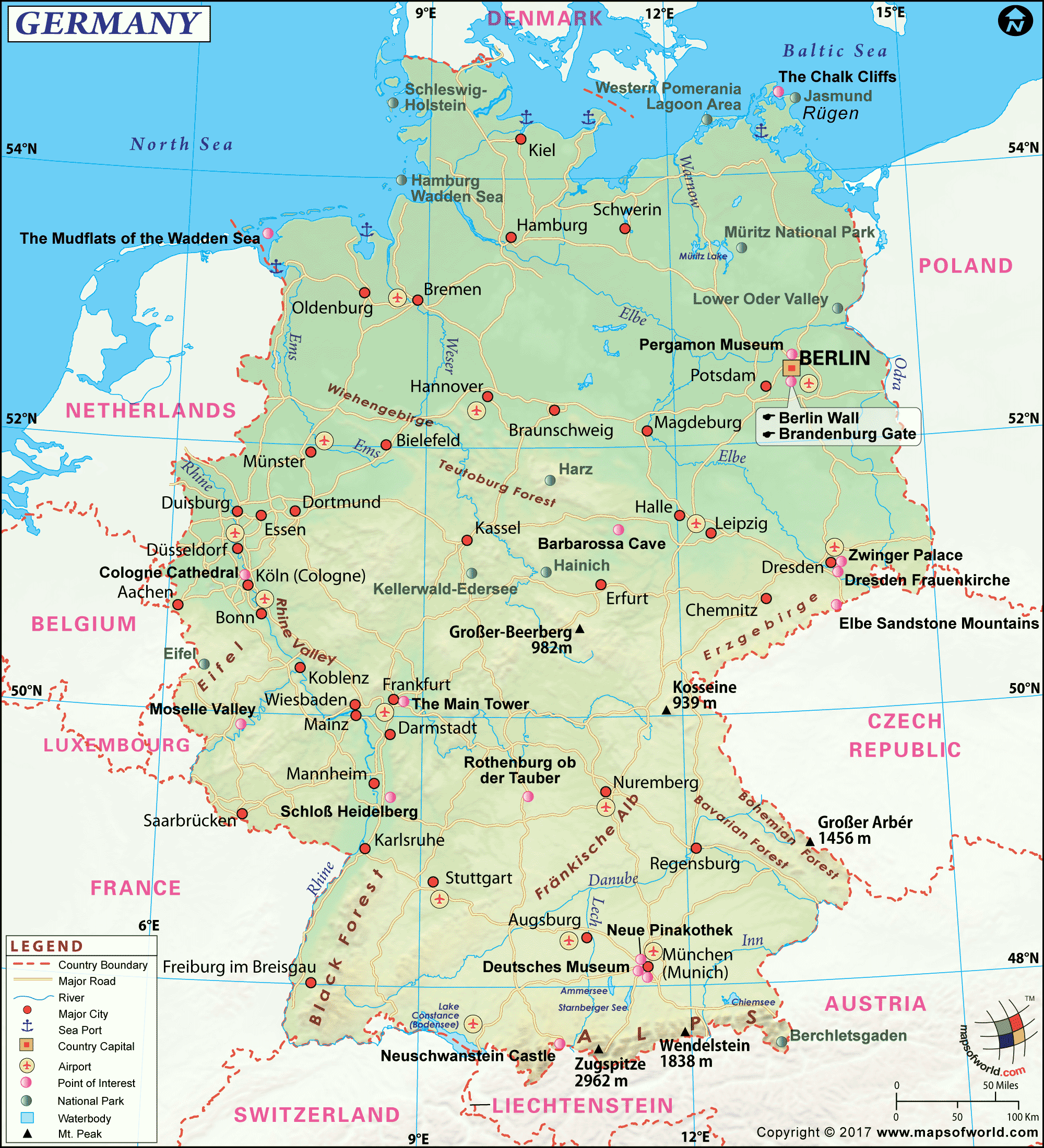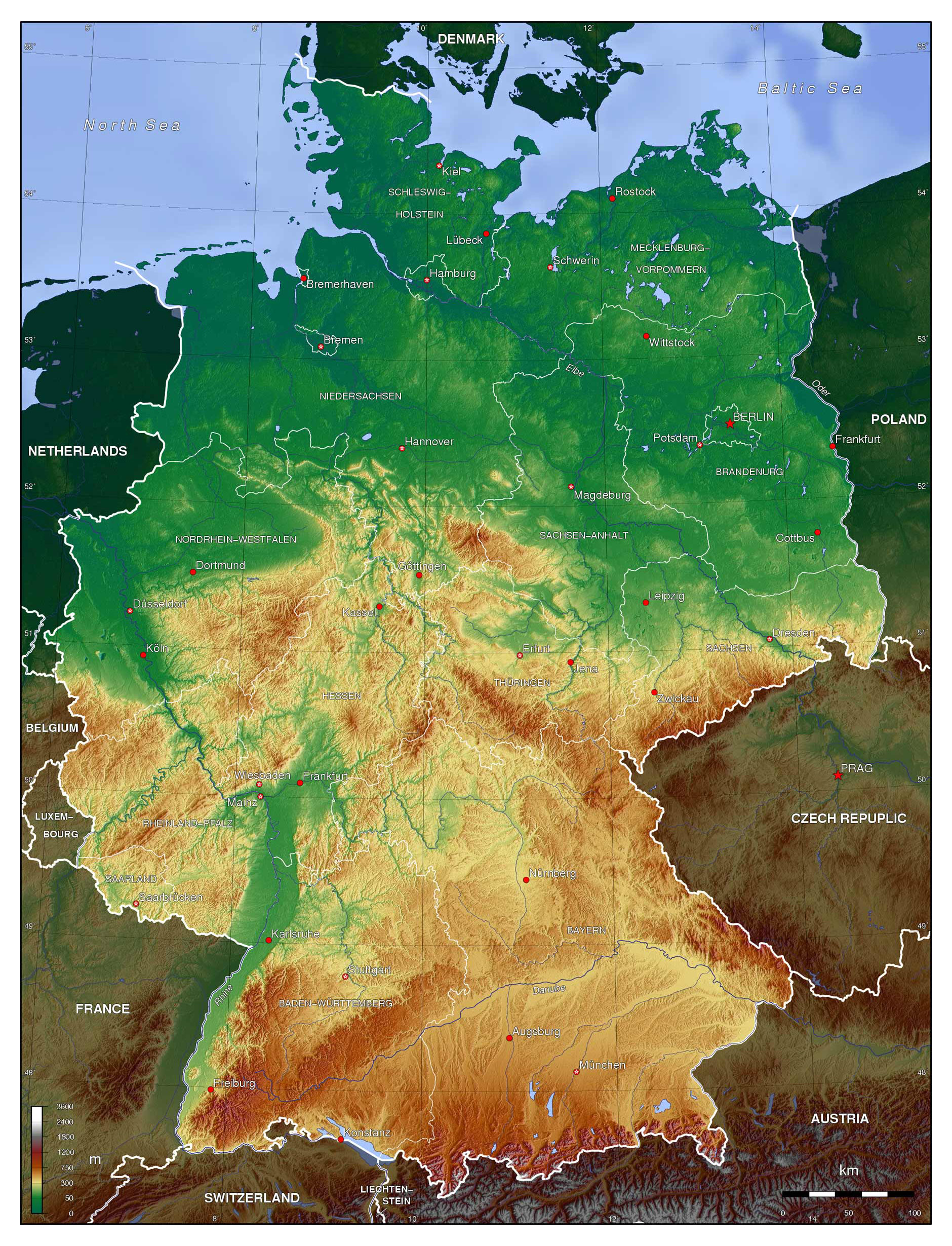Germany, a powerhouse in Europe, is often talked about for its rich history, vibrant culture, and economic influence. But when it comes to size, how large is Germany really? Picture this: Germany is the seventh-largest country in Europe by land area, but that’s just scratching the surface. Whether you're a geography enthusiast, traveler, or just curious, understanding Germany's dimensions can give you a whole new perspective on this amazing nation.
Now, let's dive in. Germany isn't the biggest country in Europe, but it's no small fry either. With an area of about 357,022 square kilometers (137,847 square miles), it holds its ground as a key player in the European Union. This means it’s bigger than countries like the UK or Italy but smaller than giants like France or Spain. Stick around, and we’ll break it down for you in a way that’s easy to digest.
But why does the size matter? Well, Germany’s geography plays a huge role in shaping its identity. From the stunning Alps in the south to the lush forests and rolling plains, every inch of Germany has something special to offer. So, buckle up because we’re about to take you on a journey through the land of poets and thinkers, exploring just how large Germany really is!
Understanding Germany’s Land Area
Let’s get technical for a sec. Germany spans approximately 357,022 square kilometers (137,847 square miles). To put that into perspective, imagine a country roughly the size of Montana in the United States. Not bad, right? But here’s the kicker—Germany’s size isn’t just about numbers. It’s about how that land is used and what it offers.
Germany ranks seventh in Europe in terms of land area. That might not sound like a lot, but consider this: it’s home to over 84 million people, making it the most populous country in the European Union. That’s a lot of people crammed into a relatively compact space. And yet, despite its density, Germany manages to maintain vast green spaces, protected areas, and some of the most efficient urban planning in the world.
Comparing Germany’s Size to Other European Nations
When you compare Germany to its neighbors, its size becomes even more interesting. For instance:
- Germany is larger than countries like the UK (242,495 sq km) and Italy (301,340 sq km).
- But it’s smaller than France (551,695 sq km) and Spain (505,990 sq km).
- And let’s not forget Ukraine, which is the largest country in Europe at a whopping 603,500 sq km.
So, Germany finds itself in a sweet spot—big enough to have diverse landscapes but small enough to feel connected. This balance is part of what makes Germany so appealing to both residents and visitors.
Geographical Diversity: What Makes Germany Unique?
Germany’s size isn’t just about numbers; it’s about the variety of landscapes it holds. From north to south, east to west, the country offers a breathtaking mix of natural wonders. Let’s take a closer look at some of the standout features:
The Northern Plains
Up north, Germany is all about flatlands and coastal charm. The North German Plain stretches across the northern part of the country, offering picturesque views of the North Sea and the Baltic Sea. This region is perfect for those who love beaches, windsurfing, and long walks by the shore.
The Central Uplands
Moving south, you’ll encounter the Central Uplands, a region characterized by rolling hills, dense forests, and charming towns. This is where you’ll find the famous Rhine River, which carves through the land, creating dramatic cliffs and vineyards. It’s like something out of a fairy tale.
The Southern Alps
Finally, in the south, Germany meets the majestic Alps. These towering peaks form a natural border with Austria and Switzerland, offering breathtaking views and endless opportunities for outdoor adventures. Whether you’re into skiing, hiking, or just soaking in the scenery, the Bavarian Alps are a must-visit.
Population Density: A Closer Look
Germany’s population density is another fascinating aspect to consider. With over 84 million people, Germany is the most populous country in the EU. But here’s the thing: despite the large population, Germany manages to maintain a relatively low population density compared to other European nations.
The average population density in Germany is about 237 people per square kilometer. That might sound crowded, but when you compare it to countries like the Netherlands (508 people per sq km) or Belgium (382 people per sq km), Germany feels spacious. This balance between urban and rural areas is one of the reasons why Germany is such a desirable place to live.
Urban vs. Rural Living
Germany’s cities are vibrant hubs of activity, with Berlin, Munich, and Hamburg leading the pack. But beyond the bustling metropolises, there’s a whole other side to Germany. Rural areas are just as important, offering a slower pace of life and a deep connection to nature. Whether you prefer city lights or countryside charm, Germany has something for everyone.
Economic Impact: How Size Influences Germany’s Economy
Germany’s size plays a significant role in its economic success. As the largest economy in Europe, Germany benefits from its strategic location and diverse geography. The country’s central position in Europe makes it a key player in trade and logistics, while its natural resources and skilled workforce drive innovation and growth.
From the industrial heartland of the Ruhr Valley to the high-tech hubs of Bavaria, Germany’s economy is as diverse as its landscape. The country is a leader in industries like automotive manufacturing, engineering, and renewable energy, thanks in part to its vast resources and skilled labor force.
Key Industries and Their Geographic Roots
Here’s a quick breakdown of some key industries and where they thrive in Germany:
- Automotive Industry: Cities like Stuttgart and Munich are home to major automakers like Mercedes-Benz and BMW.
- Renewable Energy: The northern regions, with their abundant wind resources, are leading the charge in clean energy.
- Engineering: The central and southern parts of Germany are hubs for precision engineering and manufacturing.
Germany’s size allows these industries to flourish, creating a powerful economic engine that drives the entire continent.
Cultural Influence: The Impact of Geography on German Culture
Germany’s geography has a profound impact on its culture. From the hearty cuisine of Bavaria to the seafaring traditions of the north, every region has its own unique identity. This diversity is what makes Germany so fascinating and dynamic.
Take beer, for example. Germany is famous for its beer, and different regions have their own specialties. In Bavaria, you’ll find rich, malty brews, while in the north, lighter, crisp beers dominate. This regional variation is a direct result of Germany’s diverse geography and climate.
Festivals and Traditions Across Germany
Germany’s size also means there’s always something happening somewhere. From Oktoberfest in Munich to the Christmas markets in Nuremberg, there’s no shortage of festivals and traditions to enjoy. Each region celebrates its heritage in its own way, adding to the country’s rich cultural tapestry.
Environmental Considerations: Germany’s Commitment to Sustainability
Germany’s size and geography also play a role in its commitment to sustainability. The country is a global leader in renewable energy, with a focus on wind, solar, and hydroelectric power. This commitment is driven by both environmental concerns and economic necessity.
Germany’s vast landscapes provide ample opportunities for renewable energy projects. The northern plains are ideal for wind farms, while the southern regions are perfect for solar power. This strategic use of geography has helped Germany become a model for sustainable development.
Green Initiatives Across the Country
Here are some of the green initiatives you’ll find in Germany:
- Berlin: The capital city is leading the way with urban gardening and green rooftops.
- Hamburg: Known as the “Green Capital of Europe,” Hamburg is a hub for sustainable urban living.
- Munich: This city is investing heavily in public transportation and bike-friendly infrastructure.
Germany’s commitment to sustainability is a testament to its forward-thinking approach to development.
Travel and Tourism: Exploring Germany’s Vast Expanse
Germany’s size and diversity make it a paradise for travelers. Whether you’re into history, culture, or nature, there’s something for everyone. From the historic castles of Bavaria to the modern skyline of Frankfurt, Germany offers a wide range of experiences.
Traveling across Germany is surprisingly easy thanks to its excellent public transportation system. The country’s trains are fast, reliable, and connect even the smallest towns. This makes it simple to explore everything Germany has to offer, no matter where you start your journey.
Top Destinations in Germany
Here’s a quick list of must-visit places in Germany:
- Neuschwanstein Castle: A fairy-tale castle in Bavaria that inspired Disney.
- Brandenburg Gate: A historic landmark in Berlin and a symbol of unity.
- Black Forest: A magical forest known for its cuckoo clocks and scenic trails.
Germany’s size ensures there’s always something new to discover, making it a dream destination for adventurers.
Conclusion: Why Germany’s Size Matters
So, how large is Germany? Well, it’s large enough to offer something for everyone, yet small enough to feel connected. From its diverse landscapes to its vibrant culture, Germany’s size plays a crucial role in shaping its identity. Whether you’re interested in history, economics, or sustainability, Germany has something to offer.
We hope this article has given you a better understanding of Germany’s size and what makes it so special. If you’ve enjoyed this read, don’t forget to share it with your friends and leave a comment below. And remember, the next time someone asks, “How large is Germany?” you’ll have plenty to say!
Table of Contents
- Understanding Germany’s Land Area
- Geographical Diversity: What Makes Germany Unique?
- Population Density: A Closer Look
- Economic Impact: How Size Influences Germany’s Economy
- Cultural Influence: The Impact of Geography on German Culture
- Environmental Considerations: Germany’s Commitment to Sustainability
- Travel and Tourism: Exploring Germany’s Vast Expanse
That’s a wrap, folks! Thanks for joining us on this journey through Germany’s size and all the amazing things it has to offer. Keep exploring, and who knows—maybe your next adventure will be in the land of poets and thinkers!



Detail Author:
- Name : Dr. Jules Stamm V
- Username : chance78
- Email : wunsch.cleo@bruen.com
- Birthdate : 1984-03-11
- Address : 254 Ansley Lake North Ewellborough, KS 15308-5481
- Phone : +1.469.773.7921
- Company : Mante and Sons
- Job : Opticians
- Bio : Voluptatem in doloribus hic dolor tempore unde aut. Culpa iste eligendi natus ullam perferendis quia. Provident cumque qui sunt ut et expedita sed. In voluptatem rem id aut est dolor tempora.
Socials
facebook:
- url : https://facebook.com/kaelynlynch
- username : kaelynlynch
- bio : Qui neque impedit qui laudantium voluptatibus.
- followers : 1015
- following : 2212
tiktok:
- url : https://tiktok.com/@kaelyn_lynch
- username : kaelyn_lynch
- bio : Omnis ullam quis officiis eveniet voluptates dolor. Eaque ut minus modi ex in.
- followers : 3209
- following : 1548
twitter:
- url : https://twitter.com/lynchk
- username : lynchk
- bio : Natus reiciendis animi et qui aut eos ut. Ut perspiciatis iusto eveniet. Dolorem eos aperiam ratione dignissimos incidunt consequatur.
- followers : 2578
- following : 1749
linkedin:
- url : https://linkedin.com/in/kaelyn_id
- username : kaelyn_id
- bio : Labore nostrum hic molestiae alias quia quos.
- followers : 2110
- following : 219
instagram:
- url : https://instagram.com/kaelyn.lynch
- username : kaelyn.lynch
- bio : Ut quaerat qui veniam omnis deleniti. Nesciunt enim quam sunt cumque. Qui ipsum rerum ut et non.
- followers : 5284
- following : 2696